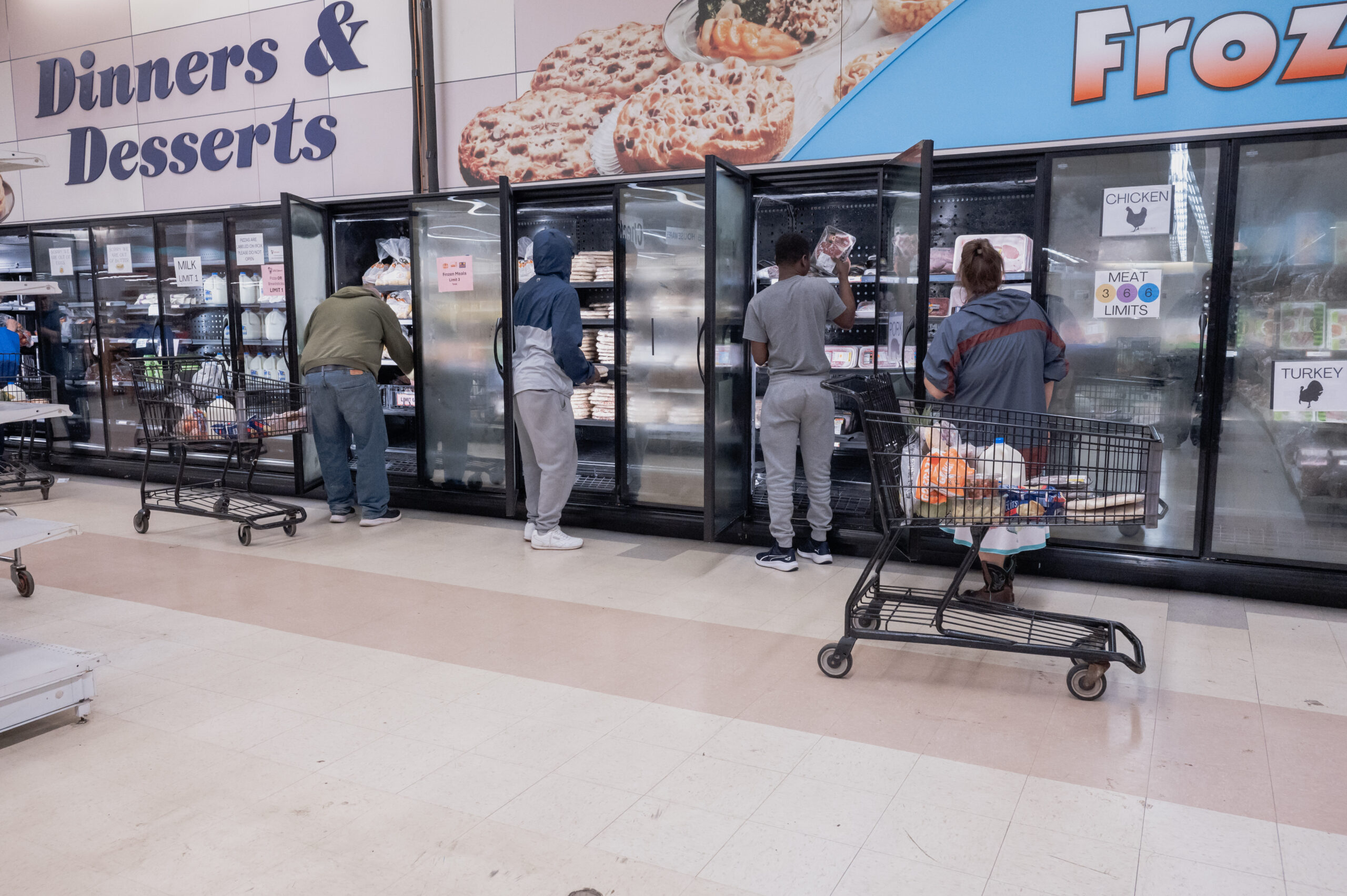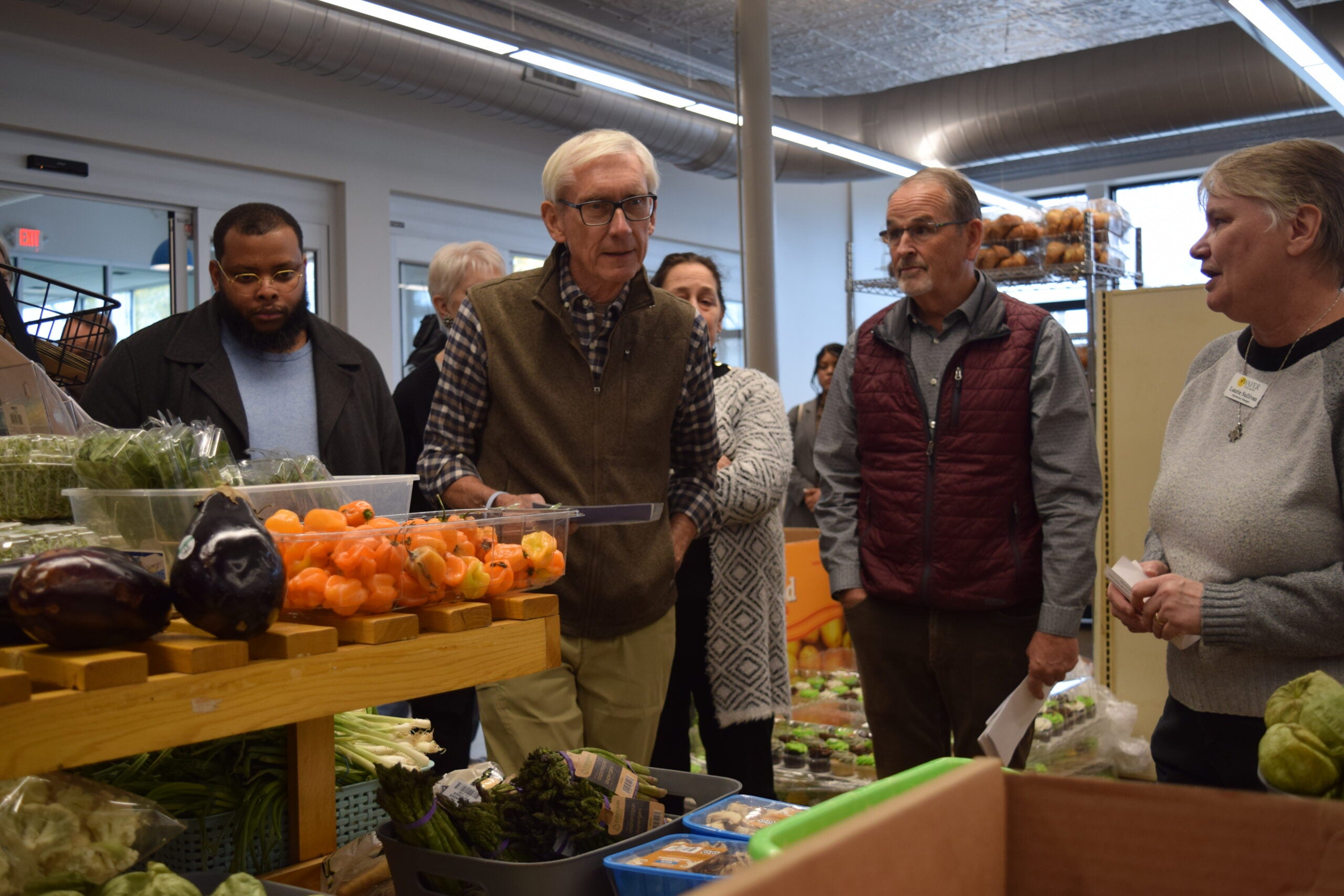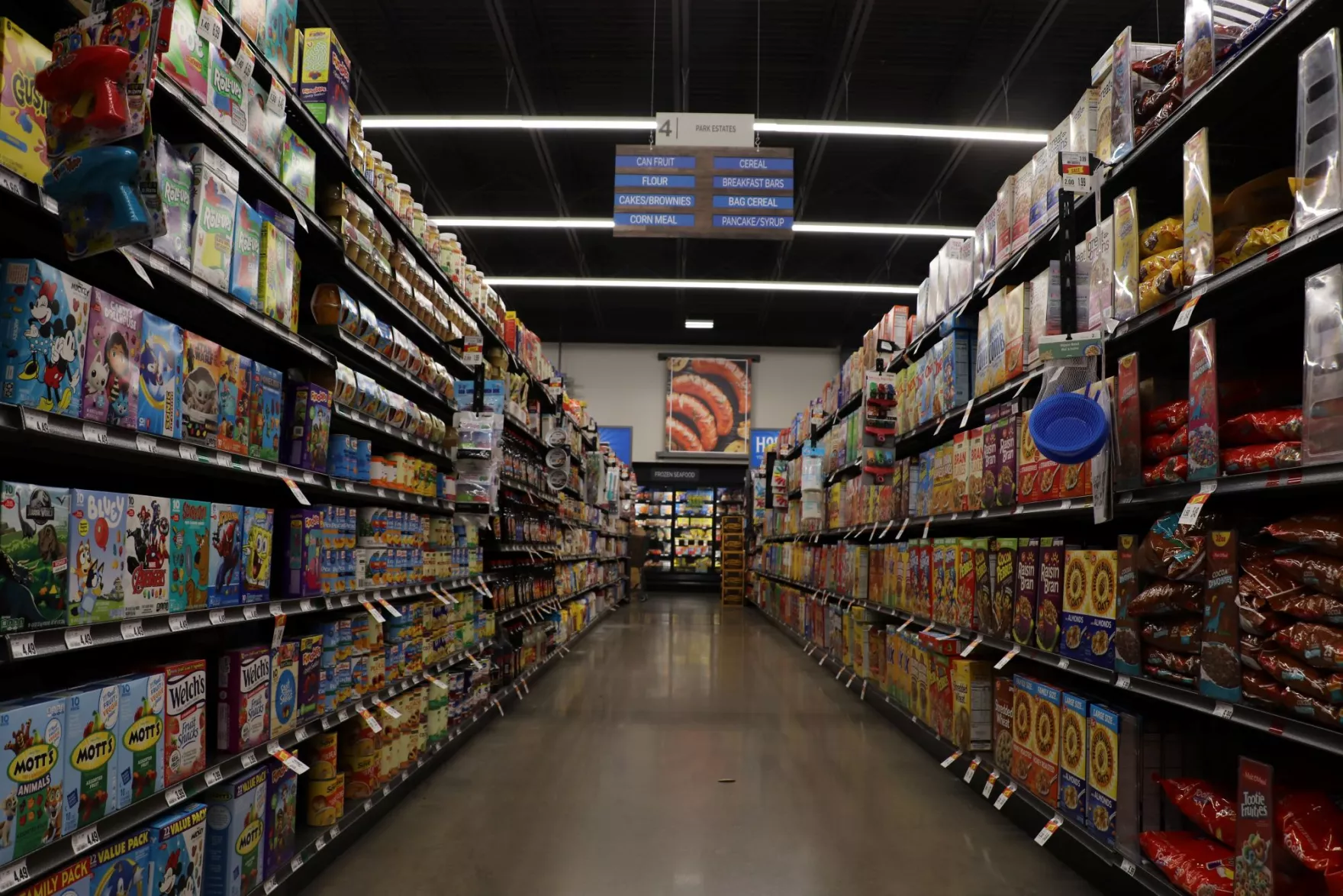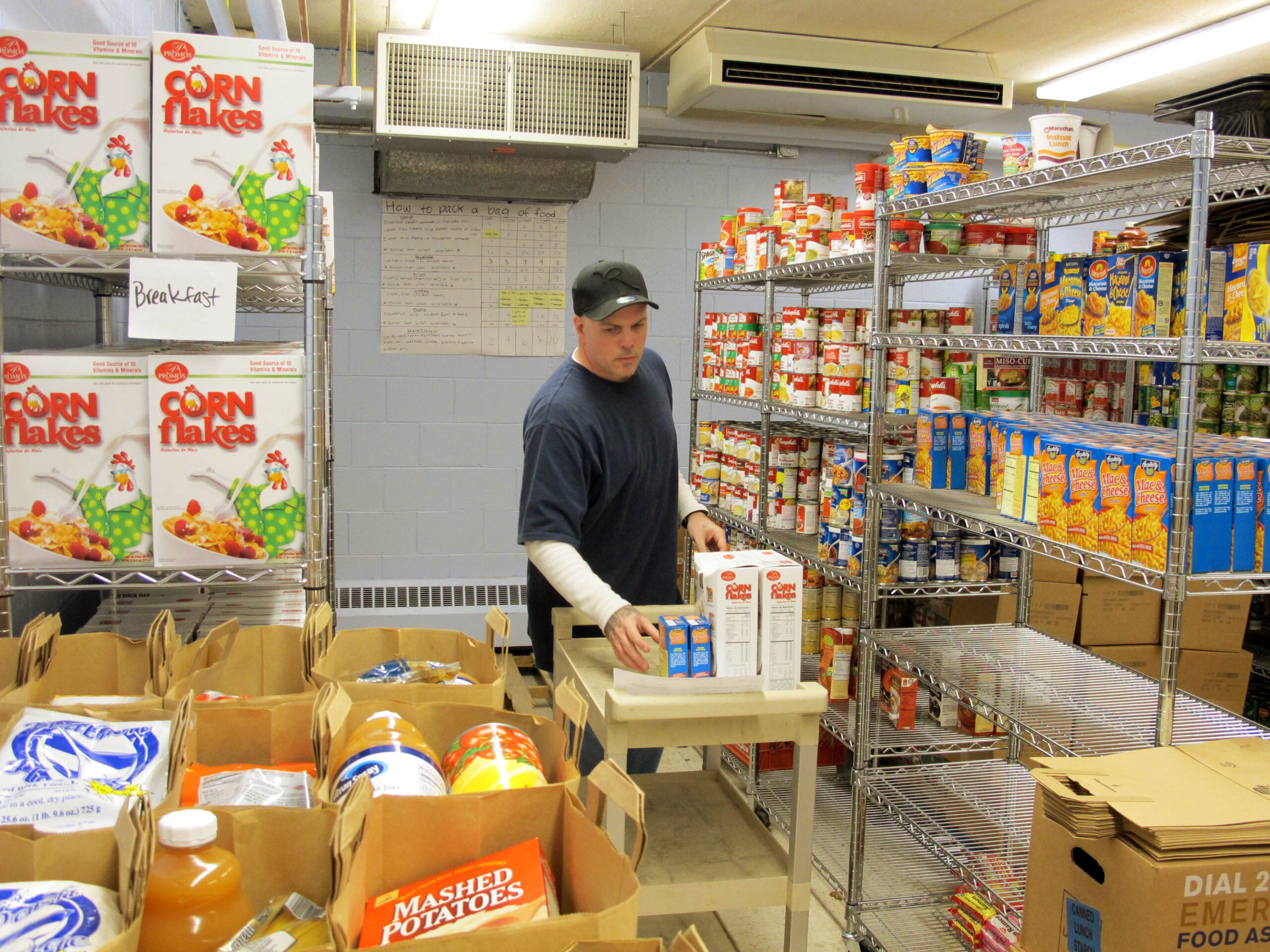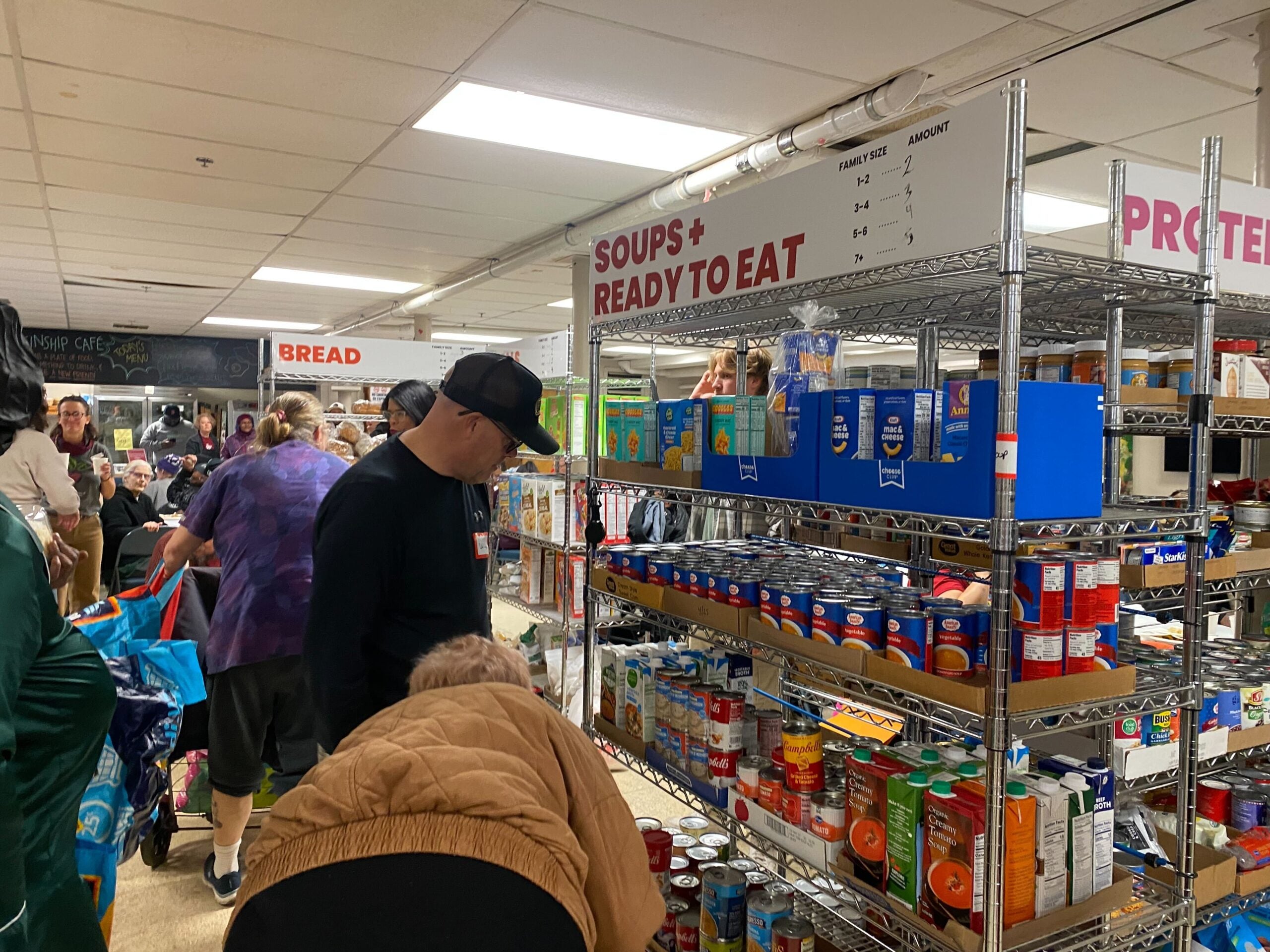More people rely on food assistance than did before the pandemic, according to a new report from the Wisconsin Policy Forum.
According to the report, more than 700,000 people were participating in FoodShare in March, a 16 percent increase from pre-pandemic levels.
“There is a lot of reason to believe that this elevated count may in fact, be the new normal,” said Mark Sommerhauser, a researcher at the policy forum.
News with a little more humanity
WPR’s “Wisconsin Today” newsletter keeps you connected to the state you love without feeling overwhelmed. No paywall. No agenda. No corporate filter.
FoodShare is the state program that distributes Supplemental Nutrition Assistance Program benefits, the federal food assistance program formerly referred to as food stamps.
As of March, Sheboygan, Milwaukee and Shawano counties had the highest FoodShare participation rates in Wisconsin. Thirty percent of Sheboygan County residents and 26 percent of Milwaukee and Shawano county residents were enrolled, according to the report. Five tribal nations had participation rates of 25 percent or more.
Enrollment highs during the pandemic linger
Enrollment increased during the pandemic and peaked in May 2021. The report said high unemployment rates early in the pandemic may have led people who would have previously qualified for the benefit to apply for it for the first time.
At the same time, awareness of the program grew and stigma surrounding the use of this public welfare program may have lessened. Allen Castillo, FoodShare Advocacy Program manager at the Hunger Task Force, said people saw family and friends enroll.
“That certainly helped encourage people to get access to SNAP and to FoodShare hare, when they may not have seen it as something that they would have wanted to do in the past,” Castillo said.
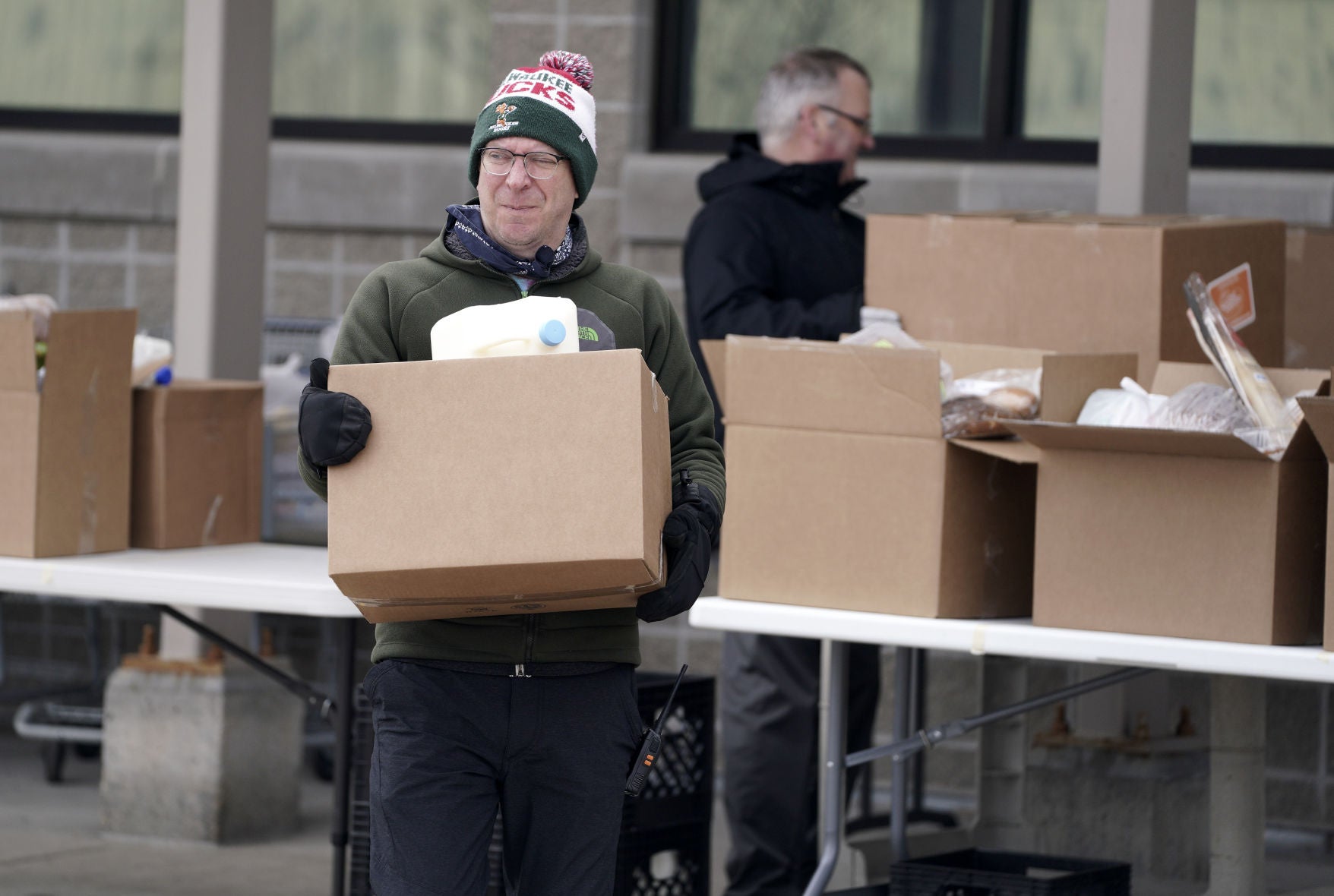
During this time FoodShare eligibility temporarily expanded and benefit payments increased. Although the pandemic exemptions have ended, a work requirement exemption still applies to the cities of Milwaukee and Racine as well as certain counties, tribal lands and reservations.
The report said higher enrollment levels are lingering as the cost of living and food prices remain high. The federal government ended extra FoodShare benefits last year and as other federal pandemic aid programs expired, many Wisconsin households struggled to make ends meet.
“The pandemic still has a lasting impact on low-income families throughout Wisconsin,” Castillo said.
According to the U.S. Bureau of Labor Statistics, consumer prices rose 21 percent from March 2020 to March 2024. From 2020 to 2023, the cost of groceries rose by 24 percent.
“Ultimately families are … having to make hard financial decisions on some of their basic needs like housing, energy assistance, food,” Castillo said.
Food scarcity still a problem
The report found FoodShare benefit payments in Wisconsin fell from their peak amount in 2022 but still remain higher than pre-pandemic levels, both because of the permanent benefit increases and the increased number of recipients.
The average benefit per recipient in March 2020 was $106, and by March 2024 had grown to $161.
Still, almost a third of households that receive SNAP benefits reported still not having enough to eat.
People are turning to other programs for help, like food pantries. One year after the federal pandemic payments ended in February 2023, food pantry use in the Greater Milwaukee area was up by 64 percent, according to the Hunger Task Force.
This is placing stress on pantries. Some food pantry organizers report spending more money on food than ever before. A coalition of 36 Dane County food pantries released a letter to the community on Tuesday, highlighting the need for short and long-term solutions.
“If we’re at a time when … unemployment is extremely low, and we still have one in 10 adults that are experiencing food insecurity,” Sommerhauser said. “That means that we still have a lot of work to do in this area.”
Wisconsin Public Radio, © Copyright 2025, Board of Regents of the University of Wisconsin System and Wisconsin Educational Communications Board.

